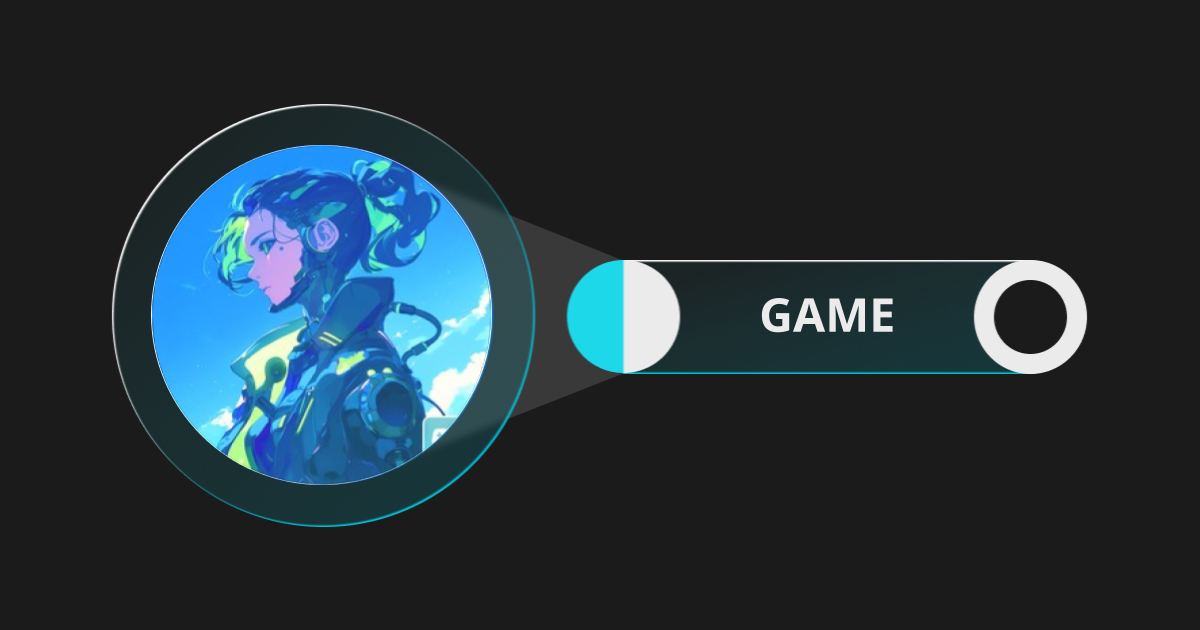
O monecie
Kalkulator ceny
Historia cen
Prognoza ceny
Analiza techniczna
Przewodnik po kupowaniu monet
Kategorie kryptowalut
Kalkulator zysków

Cena GameCreditsGAME
Jakie jest Twoje dzisiejsze nastawienie do GameCredits?
Dzisiejsza cena GameCredits
Jaka jest najwyższa cena GAME?
Jaka jest najniższa cena GAME?
Prognoza ceny GameCredits
Kiedy jest dobry moment na zakup GAME? Czy zalecane jest teraz kupno lub sprzedaż GAME?
Jaka będzie cena GAME w 2026?
Jaka będzie cena GAME w 2031?
Historia cen GameCredits (PLN)
 Najniższa cena
Najniższa cena Najwyższa cena
Najwyższa cena 
Informacje rynkowe GameCredits
Historia kapitalizacji rynkowej GameCredits
Posiadane GameCredits
Matryca dystrybucji posiadanych GameCredits
Posiadane GameCredits według koncentracji
Adresy GameCredits według czasu posiadania

Oceny GameCredits
Informacje o GameCredits (GAME)
GameCredits to kryptowaluta, która została stworzona, aby ułatwić transakcje w branży gier komputerowych. Kryptowaluta ta została uruchomiona z myślą o zapewnieniu rozwiązania problemów występujących w tradycyjnym systemie płatności w branży.
Klienci korzystający z kryptowaluty GameCredits mogą dokonywać płatności bezpośrednio między sobą, bez pośrednictwa banków i innych instytucji. Dodatkowo, użytkownicy mogą łatwo kupować, sprzedawać i handlować kryptowalutą GameCredits na różnych platformach.
Kryptowaluta ta posiada wiele zalet, które sprawiają, że jest atrakcyjna dla użytkowników. Przede wszystkim, GameCredits oferuje szybkie transakcje bez ograniczeń geograficznych. Ponadto, płatności dokonywane przy użyciu tej kryptowaluty są bezpieczne, dzięki zastosowaniu technologii blockchain.
Zaletą GameCredits jest również niski koszt transakcji, co przyciąga wielu użytkowników, którym zależy na oszczędnościach na opłatach. Warto również zaznaczyć, że GameCredits działa na zasadzie open source, co oznacza, że każdy może wziąć udział w rozwoju kryptowaluty poprzez dodanie nowych funkcji, kodeków itp.
Podsumowując, kryptowaluta GameCredits to innowacyjne rozwiązanie, które ma na celu ułatwienie płatności w branży gier. Dzięki swoim cechom i zaletom, zyskuje coraz większą popularność wśród użytkowników i inwestorów, którzy widzą w niej duży potencjał.
GAME do lokalnej waluty
- 1
- 2
- 3
- 4
- 5
Wiadomości dot. GameCredits



Nowe notowania na Bitget
Kup więcej
Często zadawane pytania
Jaka jest obecna cena GameCredits?
Czym jest 24-godzinny wolumen obrotu GameCredits?
Jaka jest najwyższa dotychczasowa wartość GameCredits?
Czy mogę kupić GameCredits na Bitget?
Czy mogę uzyskać stały dochód z inwestycji w GameCredits?
Gdzie mogę kupić GameCredits z najniższą opłatą?
Gdzie mogę kupić kryptowaluty?
Sekcja wideo — szybka weryfikacja, szybki handel

Bitget Insights





Powiązane aktywa



































Dane z mediów społecznościowych dot. GameCredits
W ciągu ostatnich 24 godzin wynik sentymentu mediów społecznościowych wobec GameCredits wynosił 3, a sentyment mediów społecznościowych do trendu cenowego GameCredits wynosił Byczy. Ogólny wynik GameCredits w mediach społecznościowych wyniósł 0, co plasuje go na 1728. miejscu wśród wszystkich kryptowalut.
Według LunarCrush, w ciągu ostatnich 24 godzin kryptowaluty zostały wspomniane w mediach społecznościowych łącznie 1,058,120 razy, przy czym GameCredits był wspominany ze współczynnikiem częstotliwości 0%, zajmując 1728. miejsce wśród wszystkich kryptowalut.
W ciągu ostatnich 24 godzin było łącznie 0 użytkowników dyskutujących o GameCredits, z łączną liczbą GameCredits wzmianek o 0. Jednak w porównaniu z poprzednim 24-godzinnym okresem, odnotowano spadek liczby unikalnych użytkowników o 0% oraz spadek wzmianek o 0%.
Na Twitterze w ciągu ostatnich 24 godzin pojawiło się łącznie 0 tweetów wspominających GameCredits. Wśród nich 0% ma bycze nastawienie na GameCredits, 0% ma niedźwiedzie nastawienie na GameCredits, a 100% jest neutralny na GameCredits.
W serwisie Reddit w ciągu ostatnich 24 godzin pojawiło się 0 postów wspominających o GameCredits. W porównaniu z poprzednim 24-godzinnym okresem, odnotowano 0% spadek liczby wzmianek.
Całościowy przegląd społecznościowy
3